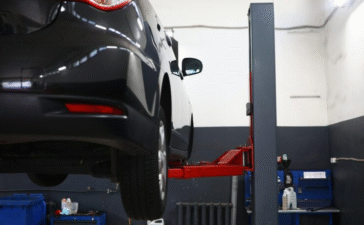Polystyrene appears everywhere in our daily lives. From takeout containers and coffee cups to protective packaging around electronics, this lightweight plastic has become ubiquitous in modern commerce. Yet as environmental awareness grows, many consumers find themselves staring at polystyrene waste and wondering: is polystyrene recyclable?
The answer isn’t as straightforward as you might hope. While polystyrene is technically recyclable, the practical reality involves significant challenges that prevent most communities from accepting it in curbside recycling programs. Understanding these complexities can help you make informed decisions about polystyrene use and disposal.
This comprehensive guide examines the science behind polystyrene recycling, explores why it’s so difficult to recycle effectively, and provides actionable solutions for reducing polystyrene waste in your home and community.
Understanding Polystyrene and Its Types
Polystyrene is a synthetic polymer made from styrene monomers, classified as recycling code #6 plastic. This versatile material comes in two primary forms, each presenting unique recycling challenges.
Expanded polystyrene, commonly known by the brand name Styrofoam, makes up the majority of polystyrene waste. This foam version contains up to 95% air, making it extremely lightweight yet bulky. EPS appears in food containers, disposable cups, packing peanuts, and protective packaging for electronics and appliances.
Solid polystyrene, also called general-purpose polystyrene, has a denser structure and appears in items like plastic utensils, CD cases, and some food packaging. While both types share the same basic chemical composition, their different physical properties create distinct recycling challenges.
The environmental impact of polystyrene extends beyond its disposal difficulties. Production of polystyrene releases greenhouse gases, and the material can take hundreds of years to decompose naturally. When polystyrene breaks down, it fragments into microplastics that contaminate soil and waterways, potentially entering the food chain.
Is Polystyrene Recyclable?
From a technical standpoint, polystyrene is indeed recyclable. The material can be melted down and reformed into new products, including picture frames, park benches, insulation, and new packaging materials. Several recycling technologies exist that can effectively process both expanded and solid polystyrene.
However, the practical reality of polystyrene recycling tells a different story. Most municipal recycling programs exclude polystyrene from curbside collection, and fewer than 10% of recycling facilities in the United States can process EPS effectively.
The primary obstacle isn’t technological capability but economic viability. Expanded polystyrene’s high volume-to-weight ratio makes transportation costs prohibitive. A truck full of EPS containers might weigh only a few hundred pounds, making collection and transport economically unfeasible for most recycling operations.
Contamination presents another significant barrier to polystyrene recycling. Food residue, grease, and other contaminants commonly found on polystyrene containers make the cleaning process expensive and complicated. Unlike glass or aluminum, which can withstand aggressive cleaning methods, polystyrene requires gentler treatment that increases processing costs.
Recycling Options for Polystyrene
Despite widespread limitations in municipal recycling programs, several specialized recycling options exist for polystyrene waste. These alternatives require more effort from consumers but provide viable paths for responsible disposal.
Specialized recycling centers operate in many metropolitan areas, accepting clean polystyrene for processing. Companies like Dart Container Corporation and Styro Recycle have established drop-off programs in various locations. These facilities use densification equipment to compress EPS, reducing transportation costs and making recycling economically viable.
Some grocery stores and retailers participate in polystyrene collection programs. Major chains occasionally partner with recycling companies to accept clean EPS packaging at customer service desks. Electronics retailers sometimes accept polystyrene packaging from products purchased at their stores.
Mail-back programs offer another recycling avenue for polystyrene waste. Several companies provide prepaid shipping labels for consumers to send clean EPS to recycling facilities. While this option involves shipping costs, it provides access to recycling for communities without local EPS processing capabilities.
Community collection events periodically offer polystyrene recycling opportunities. Environmental organizations and waste management companies sometimes organize special collection days where residents can bring various hard-to-recycle materials, including polystyrene, to designated locations.
Why Recycling Polystyrene is Challenging
The economics of polystyrene recycling create fundamental obstacles that extend beyond simple collection and processing. The low density of expanded polystyrene means recycling facilities need to collect enormous volumes to generate sufficient weight for profitable operations.
Processing costs for polystyrene recycling significantly exceed those for other common plastics. The cleaning requirements, specialized equipment needs, and energy-intensive densification process combine to create high operational expenses. Meanwhile, the market value for recycled polystyrene remains relatively low, creating an unfavorable cost-benefit ratio.
Contamination issues compound these economic challenges. Food service polystyrene containers often contain grease, sauce residues, and food particles that require extensive cleaning before recycling. This contamination not only increases processing costs but can also compromise the quality of recycled material, further reducing its market value.
Infrastructure limitations prevent many recycling facilities from accepting polystyrene. The specialized equipment required for EPS processing represents a significant capital investment that many smaller facilities cannot justify given the limited volume and profitability of polystyrene recycling.
Market demand for recycled polystyrene products remains insufficient to support widespread recycling programs. Unlike recycled aluminum or paper, which have established markets and consistent demand, recycled polystyrene competes with inexpensive virgin materials, limiting its commercial appeal.
How to Reduce Polystyrene Waste
Reducing polystyrene consumption represents the most effective approach to addressing its environmental impact. Numerous eco-friendly alternatives to polystyrene packaging have emerged, offering comparable functionality with improved environmental profiles.
Biodegradable packaging materials made from plant-based sources provide excellent alternatives to polystyrene containers. Materials like bagasse (sugarcane fiber), wheat straw, and cornstarch-based plastics offer similar insulation and protection properties while decomposing naturally in composting environments.
Paper-based packaging solutions work well for many applications traditionally served by polystyrene. Molded fiber containers, corrugated inserts, and paper-based food containers provide adequate protection and insulation while remaining recyclable through standard paper recycling streams.
Reusable alternatives eliminate the need for disposable polystyrene products entirely. Glass containers, stainless steel food containers, and ceramic cups provide durable alternatives for food storage and transport. While requiring higher initial investment, these options offer long-term economic and environmental benefits.
Consumer choices drive market demand for sustainable packaging alternatives. Supporting businesses that use eco-friendly packaging sends market signals that encourage wider adoption of sustainable practices. Many restaurants and retailers now offer compostable or recyclable packaging options in response to consumer demand.
Policy advocacy can accelerate the transition away from polystyrene packaging. Many municipalities have implemented polystyrene bans or restrictions, creating incentives for businesses to adopt alternative packaging solutions. Supporting such initiatives through civic engagement helps create systemic change.
What You Can Do: Consumer Action
Individual actions, while seemingly small, collectively create significant environmental impact when adopted broadly. Making informed choices about polystyrene use and disposal helps reduce environmental harm while supporting sustainable alternatives.
Choosing businesses that prioritize sustainable packaging demonstrates consumer demand for environmentally responsible practices. Many restaurants now offer compostable containers, and retailers increasingly use alternative packaging materials. Supporting these businesses with your purchasing decisions encourages continued innovation in sustainable packaging.
Proper disposal of unavoidable polystyrene waste minimizes environmental impact when recycling isn’t available. Clean polystyrene should be secured in regular trash to prevent wind dispersal and littering. Breaking large pieces into smaller sections reduces volume and prevents them from becoming environmental hazards.
Education and advocacy within your community can expand awareness of polystyrene recycling challenges and alternatives. Sharing information about local recycling options, organizing community collection events, or advocating for policy changes amplifies individual impact through collective action.
Participating in local environmental initiatives often provides opportunities to address polystyrene waste systematically. Beach cleanups, community recycling drives, and environmental advocacy groups frequently focus on plastic waste reduction, including polystyrene elimination efforts.
Moving Toward Sustainable Solutions
The challenge of polystyrene recycling reflects broader issues within our waste management systems and consumption patterns. While technical solutions for recycling exist, economic realities and infrastructure limitations prevent widespread implementation of effective polystyrene recycling programs.
The most promising path forward combines reduced consumption, improved alternatives, and targeted recycling programs for unavoidable polystyrene waste. Businesses and consumers working together can create market conditions that favor sustainable alternatives while supporting specialized recycling options for necessary polystyrene use.
Innovation in both recycling technology and alternative materials continues to evolve. New chemical recycling processes show promise for handling contaminated polystyrene, while bio-based alternatives become increasingly cost-competitive with traditional packaging materials.
The transition away from problematic polystyrene packaging requires sustained effort from all stakeholders. Consumers can drive demand for alternatives, businesses can invest in sustainable packaging solutions, and policymakers can create frameworks that support environmental responsibility over convenience.
By understanding the complexities of polystyrene recycling and taking informed action, we can collectively reduce the environmental impact of this persistent waste stream while supporting the development of truly sustainable packaging solutions.
Also check: “Wash a Composite Deck“
Frequently Asked Questions
Can all types of polystyrene be recycled?
Technically, both expanded polystyrene and solid polystyrene can be recycled, but practical recycling options vary significantly. Solid polystyrene items like plastic utensils and CD cases are more likely to be accepted by recycling facilities due to their higher density and lower contamination rates. Expanded polystyrene faces greater challenges due to its bulk, light weight, and frequent food contamination. Clean, white EPS has the best recycling prospects, while colored or heavily contaminated polystyrene is rarely recyclable through standard programs.
How do I find a recycling center for polystyrene near me?
Start by checking the Earth911 recycling database online, which allows you to search for specialized recycling centers by material type and location. Contact your local waste management authority for information about regional programs. Some grocery stores, electronics retailers, and shipping stores accept clean polystyrene packaging. The Alliance of Foam Packaging Recyclers maintains a directory of drop-off locations. Community Facebook groups and environmental organizations often share information about local recycling events that accept hard-to-recycle materials including polystyrene.
Is it worth recycling polystyrene?
From an environmental perspective, recycling polystyrene is beneficial when proper facilities are available, as it prevents the material from entering landfills or the natural environment. However, the economic and logistical challenges mean that prevention and reduction are more effective strategies. The energy and resources required to collect, clean, and process polystyrene often exceed those needed to produce alternative packaging materials. Focus on avoiding polystyrene products when possible, and recycle only when convenient, clean recycling options exist.
What are the best alternatives to polystyrene?
The best alternatives depend on the specific application, but several excellent options exist. For food containers, molded fiber products made from bagasse or wheat straw provide similar insulation with biodegradable properties. Corrugated cardboard works well for shipping protection and is widely recyclable. For hot beverage cups, double-wall paper cups or reusable ceramic and stainless steel options offer good insulation. Biodegradable packing peanuts made from cornstarch dissolve in water and can be composted. Glass, stainless steel, and silicone containers provide durable, reusable alternatives for food storage.
What happens to polystyrene when it’s not recycled?
Unrecycled polystyrene typically ends up in landfills, where it can persist for hundreds of years without significant decomposition. In landfills, polystyrene may release chemicals into groundwater over time. When improperly disposed of, polystyrene becomes litter that can harm wildlife through ingestion or entanglement. In natural environments, polystyrene breaks down into microplastics that contaminate soil and water systems. Ocean-bound polystyrene creates particular environmental problems, as it fragments into particles that marine life mistakes for food. Incineration of polystyrene in waste-to-energy facilities can release harmful compounds unless proper emission controls are used.
How can I tell if my polystyrene is too contaminated to recycle?
Polystyrene containers with visible food residue, grease stains, or strong odors are generally too contaminated for recycling. Items that cannot be easily cleaned with basic washing are unsuitable for most recycling programs. Cracked, broken, or severely stained polystyrene rarely meets recycling quality standards. Colored polystyrene, while technically recyclable, has limited market demand and may not be accepted by many facilities. The general rule is that polystyrene should be as clean as you would expect from a reusable container. When in doubt, contact your local recycling facility for specific guidelines about acceptable contamination levels.












